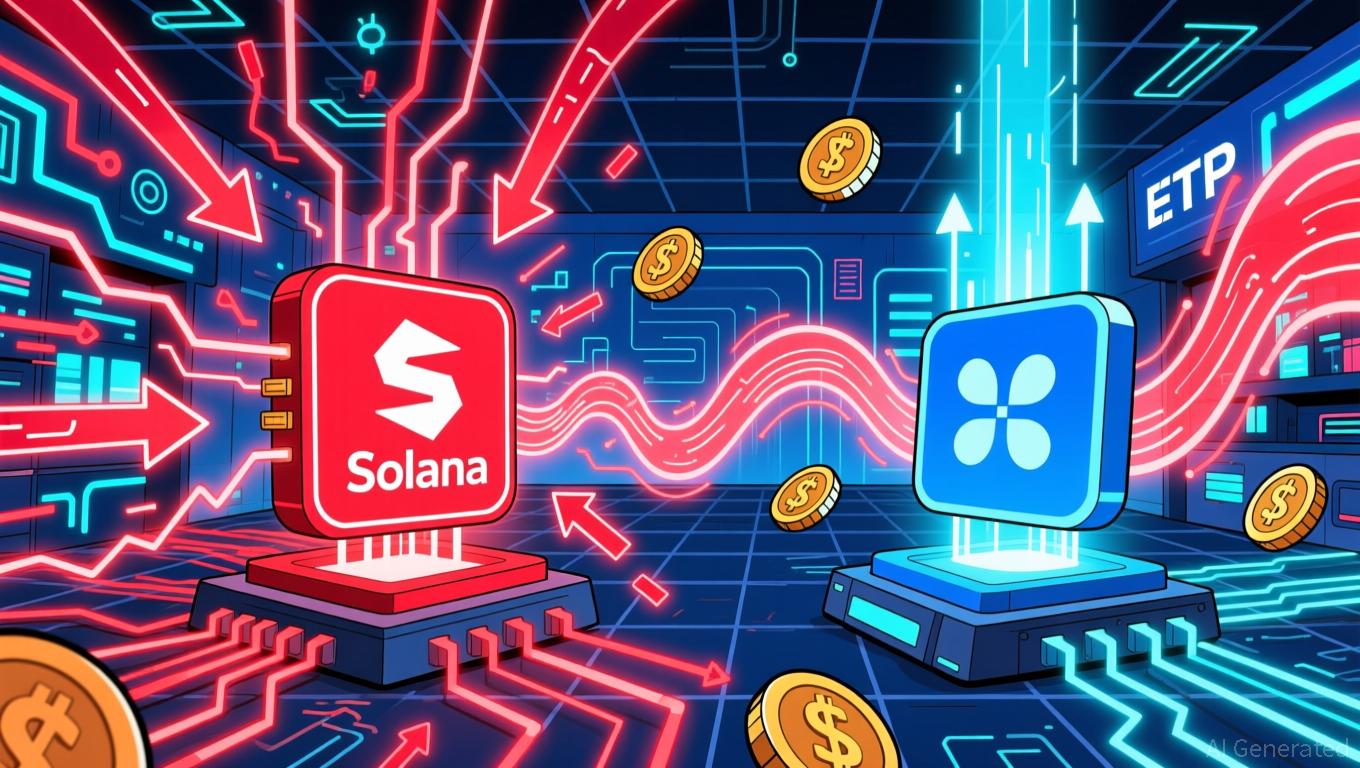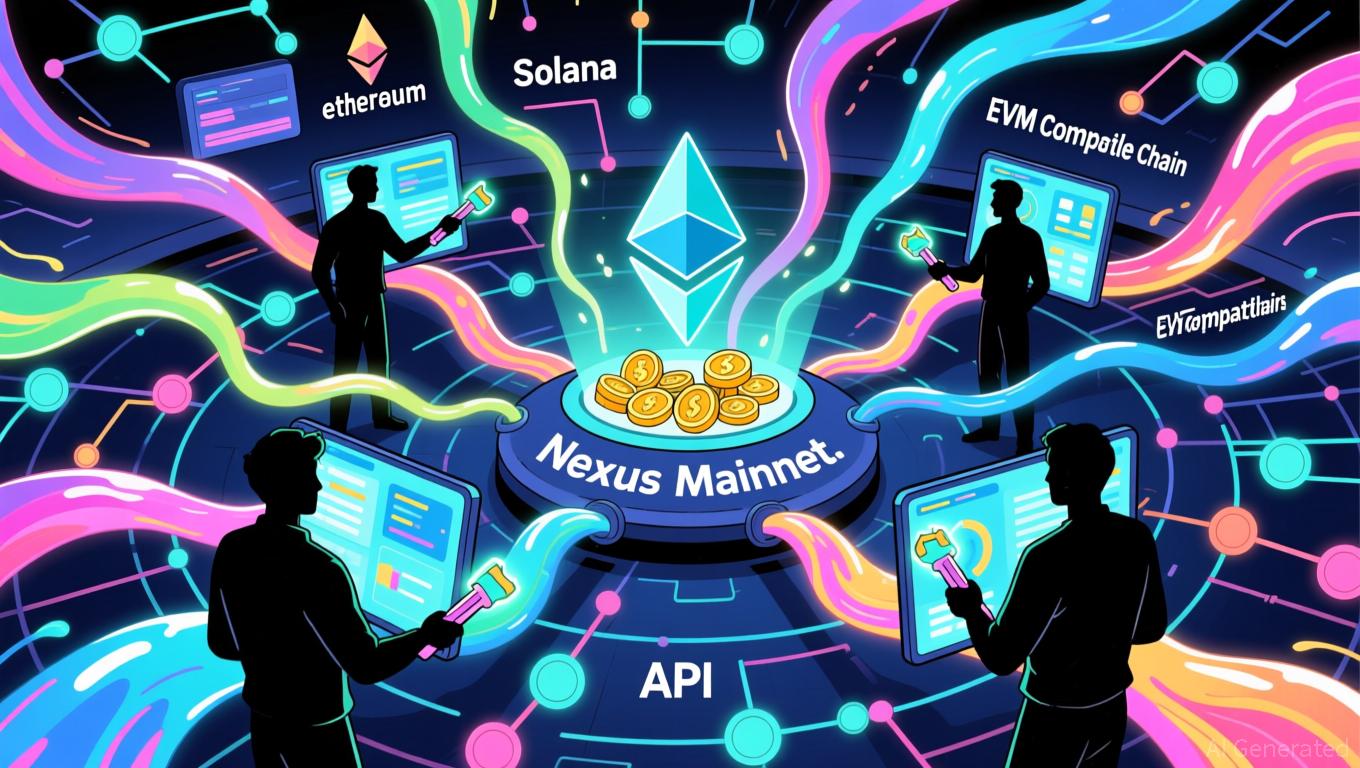XLM Gains 2.31% as Advancements in Institutional Staking and AI Adoption Indicate Promising Long-Term Expansion
- XLM rose 2.31% in 24 hours amid short-term stabilization despite 14.23% monthly and 21.37% annual declines. - Lumint's AI-powered hybrid node staking model automates operations across blockchains, enhancing accessibility for institutional and retail users. - Ethereum's gas limit increase to 60M reflects AI-driven scaling trends, indirectly supporting XLM's position as a low-cost cross-border payment solution. - Institutional adoption of AI integration and infrastructure innovations, including OKX partner
XLM Market Performance and Technological Advances
As of November 28, 2025, XLM experienced a 2.31% increase over the previous 24 hours, reaching a price of $0.2619. Over the past week, XLM climbed by 5.78%. However, the token saw a 14.23% decrease in the last month and a 21.37% decline over the past year.
Despite the recent monthly and yearly downturns, XLM’s short-term gains highlight a period of stabilization, driven by ongoing institutional interest and technological progress within the Stellar Lumens ecosystem. These developments suggest a positive outlook for XLM’s long-term prospects, even as the broader market continues to evolve.
Innovative Hybrid Staking Model by Lumint
A significant milestone for the Stellar network is the introduction of a hybrid node staking system by Lumint, a platform created by IntelliQuant. This new model merges artificial intelligence with decentralized infrastructure, streamlining node management for both institutional and individual users across various blockchain platforms. Unveiled at a recent AI and blockchain event, the system features a hybrid incentive structure that aims to deliver sustainable rewards. It also incorporates gas fee sponsorship and leverages account abstraction technology, simplifying user experience and broadening accessibility.
AI-Driven Investment Tools and Global Partnerships
Lumint is also preparing to launch a suite of AI-powered investment services, including intelligent signal alerts, automated portfolio management (robo-advisory), and personalized cryptocurrency trend analyses. These offerings are designed to support investors with enhanced decision-making and risk mitigation, utilizing advanced trading strategies and platform technology. The robo-advisory feature is currently in prototype testing, and Lumint has recently established a brokerage partnership with the global exchange OKX, paving the way for international growth.
AI Integration Across Blockchain Networks
The adoption of artificial intelligence in blockchain infrastructure extends beyond staking and investment platforms. For instance, Ethereum’s latest upgrade increased its block gas limit to 60 million, showcasing how AI-driven enhancements are enabling networks to handle greater transaction volumes and more sophisticated smart contracts, thereby boosting efficiency and reducing network congestion.
Researchers and co-founders at the Ethereum Foundation have suggested that, thanks to improvements in cryptographic processing and state management, gas limits could see a fivefold increase in the coming year.

Implications for XLM and the Broader Blockchain Landscape
Although Ethereum’s gas limit changes do not directly impact XLM, they reflect a wider movement toward scaling solutions across the blockchain industry. Stellar Lumens has long been recognized for its speed and low transaction costs, particularly in cross-border payments and financial services. These infrastructure improvements across the sector may further enhance XLM’s reputation as a scalable and efficient protocol.
Looking ahead, analysts believe that XLM’s price will continue to be shaped by factors such as institutional adoption, AI integration, and overall market trends. While the token has faced notable declines over the past year, the recent uptick in short-term performance points to renewed optimism and growing engagement from both investors and developers.
Disclaimer: The content of this article solely reflects the author's opinion and does not represent the platform in any capacity. This article is not intended to serve as a reference for making investment decisions.
You may also like
Ethereum News Update: Amundi’s Integrated Approach Connects Blockchain with Conventional Financial Regulations
- Amundi, Europe's largest asset manager, launched its first Ethereum-based tokenized money-market fund, enabling 24/7 settlements and transparent record-keeping via blockchain. - The hybrid model, developed with CACEIS, combines traditional fund operations with blockchain-based ownership, preserving regulatory compliance while expanding investor access. - Ethereum's dominance in stablecoin and RWA transfers ($105.94B in 30 days) underscores its role in accelerating tokenization, with Amundi positioning it

XRP News Today: XRP ETFs Drive Price Increases, While Solana ETFs Ease Selling Pressure
- XRP ETFs raised $587M in inflows since late November, outpacing Solana's $568M as investors favor altcoins with regulatory clarity and utility. - Bitwise XRP ETF's $107M debut and zero-fee strategy drove momentum, while Solana ETFs faced $156M weekly outflows due to network reliability concerns. - XRP's inflows acted as a "battering ram" pushing prices above $2.27, contrasting Solana's ETFs which merely dampened sell pressure without reversing its decline. - Analysts predict XRP could reach $3 by Decembe

The Federal Reserve's Change in Policy and Its Impact on Alternative Cryptocurrencies Such as Solana
- Fed's 2025 policy shifts, including rate cuts and stablecoin regulations, are reshaping altcoin markets by altering liquidity and risk appetite. - Solana's Alpenglow upgrade (150ms finality, 1M TPS) addresses scalability issues, aligning with Fed's AI-driven infrastructure focus despite network reliability concerns. - Institutional inflows into Solana ETFs ($100M AUM) contrast with retail caution (78% HODLers in red), highlighting divergent risk perceptions amid 30% price corrections. - Divergent ETF flo

Avail's Intent-Driven Nexus Addresses the Issue of Fragmented Liquidity Across Chains
- Avail launches Nexus Mainnet, a cross-chain solution unifying liquidity across Ethereum , Solana , and EVM networks. - The intent-solver model enables seamless asset transfers without technical complexities, streamlining user experiences. - Developers gain modular tools for multichain integration, reducing costs as cross-chain liquidity demand grows. - Nexus abstracts execution layers, offering unified balances and execution while addressing fragmentation challenges. - With $50B+ in cross-chain activity
